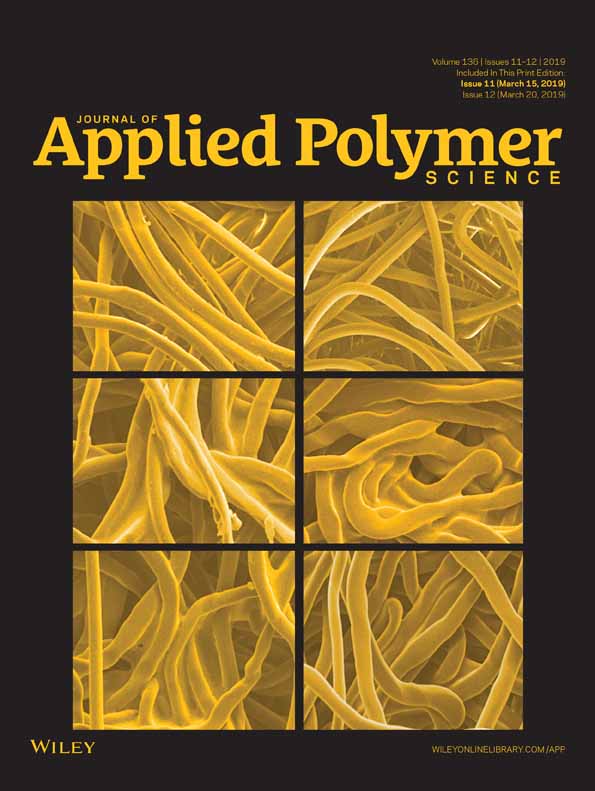Elastic modulus of thermoplastic elastomers investigated with the instantaneous volumetric strain method
Abstract
The factors influencing the elastic modulus [K(t)] of thermoplastic elastomers (TPEs) were investigated under spherical indentation mode with the instantaneous volumetric strain method. The TPE samples were prepared by the hot-pressing method, and the variation in K(t) was investigated at different thicknesses, loading forces, and spherical indenter radii (Rs). The results demonstrate that the K(t) values of the TPEs decreased nonlinearly with the depth–radius ratio. The sample thickness [H(t)] and R showed positive and negative relationships with K(t), respectively. However, the loading force did not exhibit any significant effect on K(t). In a certain depth–radius ratio range, K(t) had strong functional relationships with H(t), R, and indentation depth. These results provide a reference for the mechanical property investigation of elastoplastic materials. © 2018 Wiley Periodicals, Inc. J. Appl. Polym. Sci. 2019, 136, 47181.




